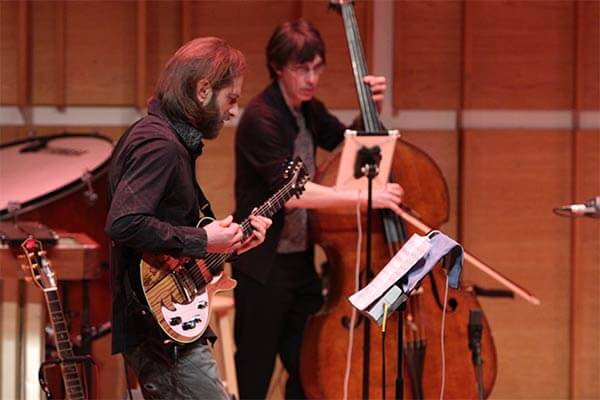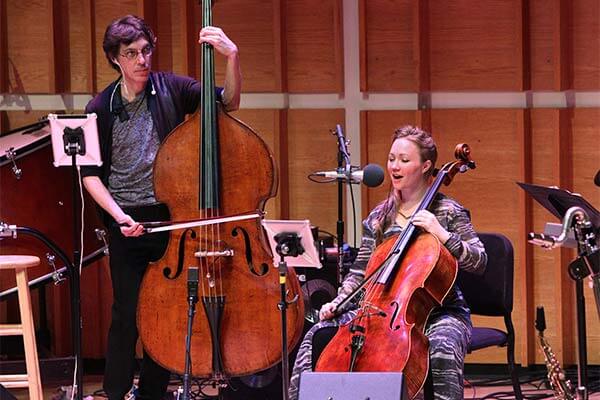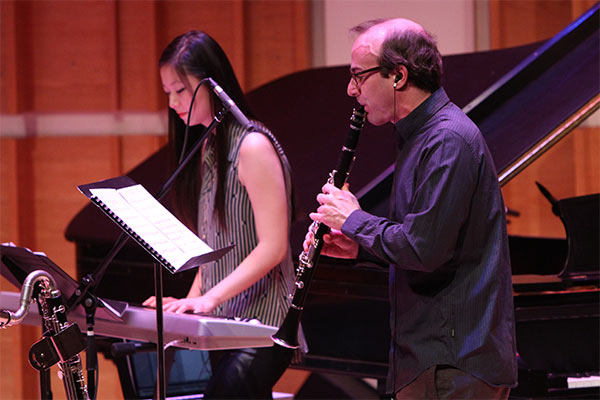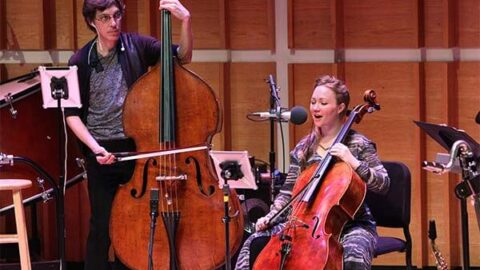 Before Kickstarter, before buzz words like “crowd-funding” and even before the internet was introduced into most of our homes (let alone a place where we can spend our money) Bang On A Can was on the frontier with the People’s Commissioning Fund. Since 1997, Bang On A Can has commissioned over 40 new pieces from a variety of emerging composers through the PCF. In fact, the composers are so diverse that the annual concert event has notoriously blurred the lines of style and genre beyond just “contemporary classical” music.
Before Kickstarter, before buzz words like “crowd-funding” and even before the internet was introduced into most of our homes (let alone a place where we can spend our money) Bang On A Can was on the frontier with the People’s Commissioning Fund. Since 1997, Bang On A Can has commissioned over 40 new pieces from a variety of emerging composers through the PCF. In fact, the composers are so diverse that the annual concert event has notoriously blurred the lines of style and genre beyond just “contemporary classical” music.

Last year, composers like Tyondai Braxton and Dan Deacon shook things up with some exciting new works and found ways to use the versatile musicianship of the Bang On A Can All-Stars. While this year didn’t hijack our smartphones, it did offer some interesting new ideas as well as another genre-bending program for which the event has become known.
The Bang On A Can All-Stars began the concert with a piece originally commissioned by the ensemble 20 years prior. Lick by Julia Wolfe (co-founder of Bang On A Can) begins with these almost chaotic and fragmented bursts of energy. You could tell that this was going to coalesce as every part of the ensemble began morphing into a distinct character. The build was tremendous as her nods to “funk, motown and rock” synthesized seamlessly into something that sounded almost uniquely New York. These individual characters became more defined as the piece broke into a full-on jam session. As far as opening pieces go, this doesn’t get much better.

Firewood by Alvin Lucier was the first piece on the program from this year’s PCF. While the commission asked to use a field recording, Lucier decided to go in a different direction. Instead, created the atmosphere of “insects crawling around” by use of the acoustic instruments on the stage. The work featured two trios – cello, bass, guitar and clarinet, piano, percussion – a dichotomy intended to manipulate the collision of waveforms. The collision occurred as the pitches of the instruments moved closer and further apart, much like tuning a guitar if you didn’t have a tuner. As it slowly grew, the tension between the pitches created a symbolic ecosystem where these insects were crawling around and singing to each other. A great new sound created by a veteran composer which complemented the younger emerging composers on the program
Richard Reed Parry was not in attendance due to his ongoing tour with Arcade Fire. His offering was nothing like the driving rock albums of his band. Instead, it was an understated work with a somewhat complex procedure. The Brief and Neverending Blur introduced stethoscopes worn by each of the musicians. They used the devices to monitor their own heartbeat and breathing. These pulses combined with carefully crafted lines of melody, created canonic motifs which were deployed into an atmosphere accompanied by a series of tape loops. The noticeable jazz characteristics were charming and the overall affect was this very organic economy of antiphonal characters that created a warm and sentimental sound base.

The last piece from the PCF works was Daniel Wohl’s Holographic. The work was a study in auditory illusion as he merged both acoustic and electronic/pre-recorded sounds. This interesting orchestration, doubling pre-recorded sounds with live instruments, created a sonic illusion in the sense that the instruments almost sounded electronic. The brilliant blend of timbres—a sound that was probably more suited to be heard than described—used very unconventional textures that formed a tonal and rhythmic minimalist structure. While the piece worked for the musicians of the ensemble, some instruments were added: a synth pad instead of piano and cellist Ashley Bathgate was even asked to sing.
David Lang’s work Death Speaks was introduced as the final piece on the program. Inspired by Schubert’s obsession with texts involving death, Lang takes this theme and attempts to create an intimate environment to recycle these excerpts – much like he did with Bach in his work the little match girl passion. Worden’s voice was a perfect match to express the haunting mystery of death and the reassigned instrumentation was just as effective. It was a perfect cap to a night filled with new and exciting works.

While the Ecstatic Music Festival is only in its fourth season, it feels already like a firmly rooted event in classical music. Each year the PCF concert brings exciting musicians and emerging composers from within and outside the world of classical music. The result is always an exchange of ideas and sounds that might propel the next composer or musician to try something new or innovative. Bang On A Can is by far leading the way with these exciting commissions and bringing new listeners on board. This year was no exception.
























